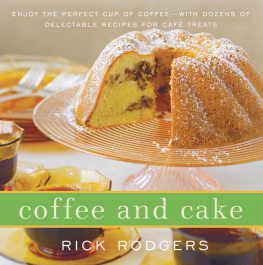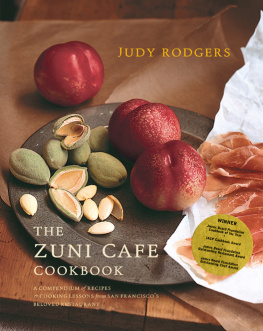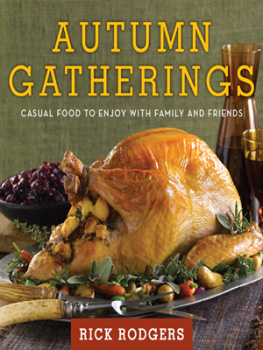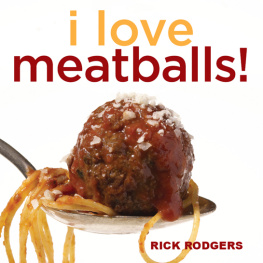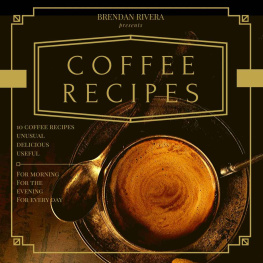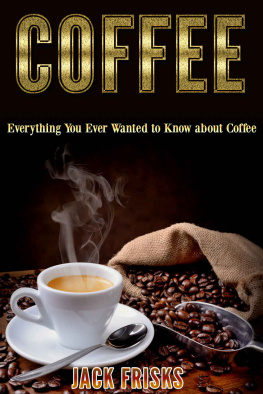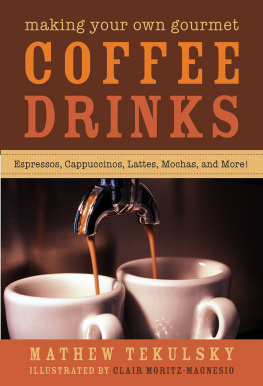W hen I was growing up, coffee and cake were almost inseparable. Certainly we drank coffee in its most familiar form, on its own to jumpstart the day or as an afternoon pick-me-up. But my most vivid memories are of coffee paired with cake, appearing together at special family gatherings. From birthday parties to baby showers to weddings, homemade cakes were carefully constructed and proudly served, always with a steaming pot of coffee.
My mothers family came from Liechtenstein, so their attitude toward coffee and cake was informed by the Old World coffee culture, with its cozy coffeehouses and luscious pastries. Even the American tradition of the coffee klatsch, an at-home gathering with coffee and sweets, had its beginnings in mid-nineteenth-century Germany. But the love of coffee and cake is hardly restricted to German-speaking people.
Today, virtually every American town has a coffeehouse of some kind, either a satellite of a mega-chain or a privately owned shop, selling many varieties of coffee beans and a wide range of beverages. Italian espresso-based coffee drinks have become commonplace, but so have coffee beverages from Vietnam or Thailand, readily purchased (with appropriate sweets) at Asian restaurants. Coffee has long been a part of the American social experience, but now that experience has a more international feeling, light years beyond the dented percolator on the back of the stove. For hundreds of years, the caffeine in coffee has served as a stimulant to encourage lively conversation at any gathering, and where there is coffee, cake is usually close by. Cakes are meant to be shared. Even the most gluttonous of gluttons would be hard-pressed to bake a cake and eat it alone.
Coffee and Cake shows how to prepare these two separate, yet inseparable, components at their very best in your home. Coffee is a very complex subject, and there are innumerable varieties of cakes, but this book focuses on the essentials. First, the Coffee Primer teaches the basics of how to choose beans to suit your personal taste and make a better cup of coffeeyoull learn some fascinating historical facts about coffee along the way, too. The next chapter shows a range of coffee beverages, both hot and iced. Then, a second primer lays out the groundwork for baking wonderful cakes time after time, followed by cake recipes designed to be savored with coffee. You can choose simple and rustic cakes for serving at a coffee klatsch, fun cupcakes for both kids and grown-ups, American-style cakes that are sure to bring back memories of old-fashioned flavors, and elaborate creations worthy of a European caf.
So, the next time you invite friends for a chat over a cup of coffee and a slice of cake, turn to Coffee and Cake for ways to make both the best youve ever served.

I ts easy to take coffee for granted. For many of us, drinking a cup of the dark, aromatic brew is at the very least an everyday occurrence. However, the steps taken to get the coffee in your mug involve countless people, usually thousands of miles away.
The economics of coffee are staggering. After oil, green (unroasted) coffee beans are the second most traded commodity in the world, literally providing the grounds for the approximately 500 billion cups brewed annually. Depending on the source, it is estimated that anywhere from 60 to 120 million people rely on coffee for their livelihoodand whatever the true number, thats a lot of people. Growing, harvesting, and processing coffee are extremely labor intensive, as these numbers show.
However, todays consumers are hardly taking coffee for granted. More and more coffee lovers are choosing their coffee very carefully, paying close attention to the source of the bean, the darkness of the roast, and, with the impact of the fair-trade and sustainable-agriculture movements, the political implications of their purchase. This primer will walk you through the basics of coffee, from its history to its agriculture, and then on to its preparation in your home. You will learn to make sense of some of the less familiar words at your local coffee purveyorwhat is Organic SHG Chiapas Coffee, anyway? You will end up with newfound appreciation for your cup of java.
A SHORT HISTORY OF COFFEE
While it is difficult to pinpoint its exact origin, most experts cite Ethiopia as the source of the arabica coffee plant (the more important of the two major commercial species). As it is one of the few plants that contain caffeine, the natives must have noticed the effect it had on their wakefulness. The berries and leaves were boiled to make a kind of tea, and the berries were mixed with animal fat to make a kind of prehistoric energy bar.
From there it migrated to modern-day Yemen, just across a narrow strait from the coffee-producing area of Africa. Coffee, as a stimulating but not intoxicating substitute for forbidden alcoholic beverages, became an important part of Islamic life. The Arabs learned to roast the beans to improve their flavor. Most of the words we use for coffee are from Muslim cultures. The Turkish khaveh is in turn derived from the Arabic qahweh . Mocha is named for the Yemenite port on the Red Sea (todays Al-Mokka) that was the Arabian coffees major distribution point. (The term mocha has nothing to do with chocolate, although some people may find a hint of naturally occurring cacao flavor in Arabian coffee beans.) Its also possible that the word evolved from the Kaffee region of Ethiopia, one of the areas where coffee was first cultivated.
Coffee remained an exclusively Muslim beverage until the late 1500s, when Venetian traders began to bring the beans to Italy. For various reasons (including its Muslim heritage and its inexplicable effect on the nervous system), coffee was originally considered an evil drink until no less a personage than Pope Clement II tried the beverage and deemed it fit for Christians to drink. And drink it they did. From Venice, it spread like wildfire throughout Europe, first to the courts, and then to the populace. Following a terrible siege of Vienna in 1683, the departing Turks left behind bags of coffee beans and established a place for coffee in Austrian culture.
Coffeehouses, especially those in London, became much more than just venues where locals could sample this new beverage. (In the Old World, there was a difference between a coffeehouse, which specialized in serving coffee and tea with light meals sold as a mere convenience, and a caf, which offered more substantial food. The line is blurred today.) Charles II unsuccessfully tried to close them as places where the disaffected met and spread scandalous reports concerning the conduct of His Majesty and his Ministers. Entire cults developed around coffeehouses and their habitus, a practice that only weakened when World War II changed the entire fabric of European culture.
The first American coffeehouse opened in Boston in 1669. The British had a virtual monopoly on the tea trade and controlled its price, usually unfairly. After the Boston Tea Party in 1773, drinking tea became an unpopular pro-British act, and coffee, which could be imported directly from Caribbean farms, made inroads in Americas beverage habits. When another embargo affected tea trade during the War of 1812, coffee became the American beverage of choice. Our collective coffee culture includes coffee shops, cafeterias, and the Bohemian urban cafs of the 1950s. The latter carried on the tradition of being hot spots for political protest, with music added to spread the protesters messages. Dare I say that without coffee there would be no Bob Dylan?

